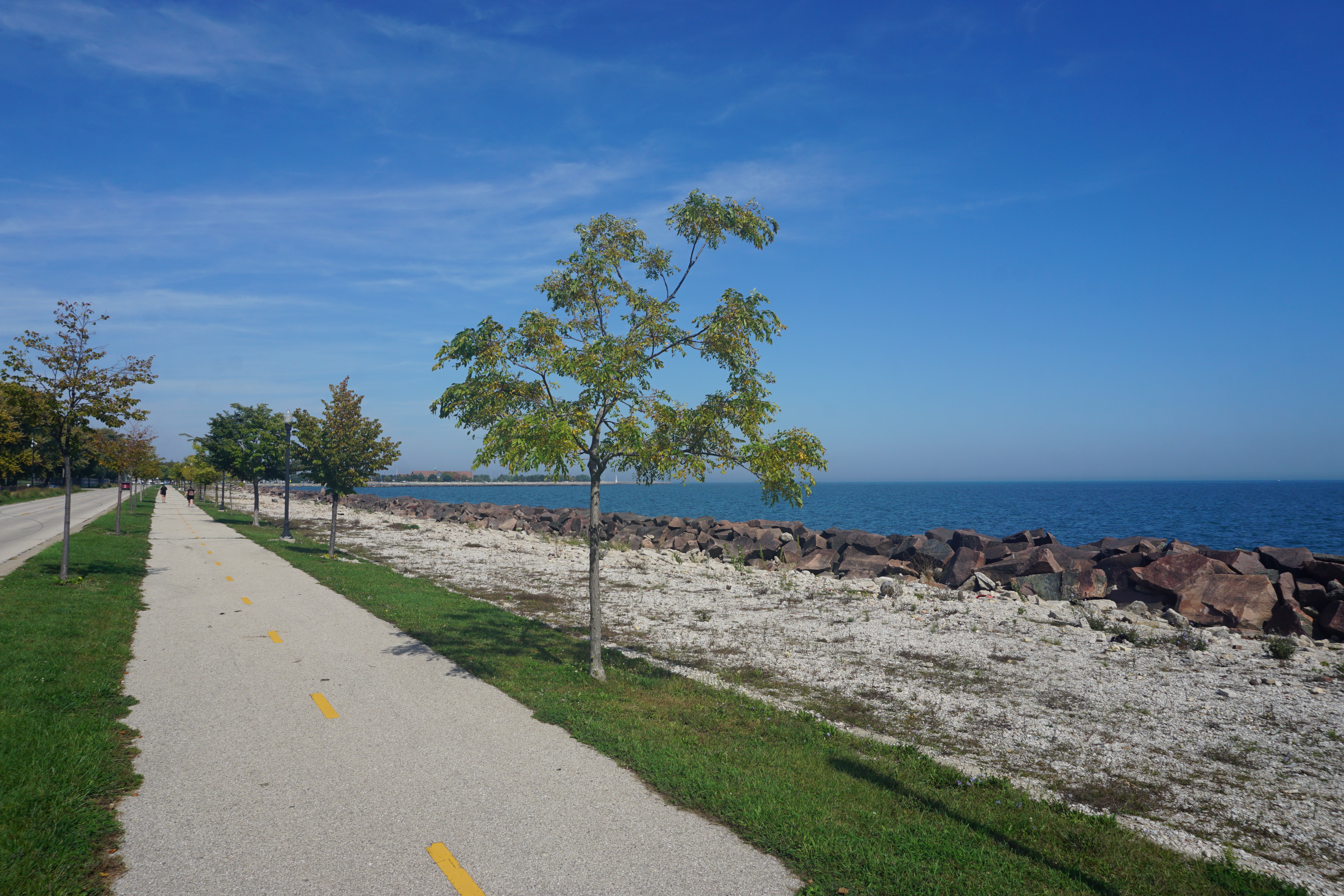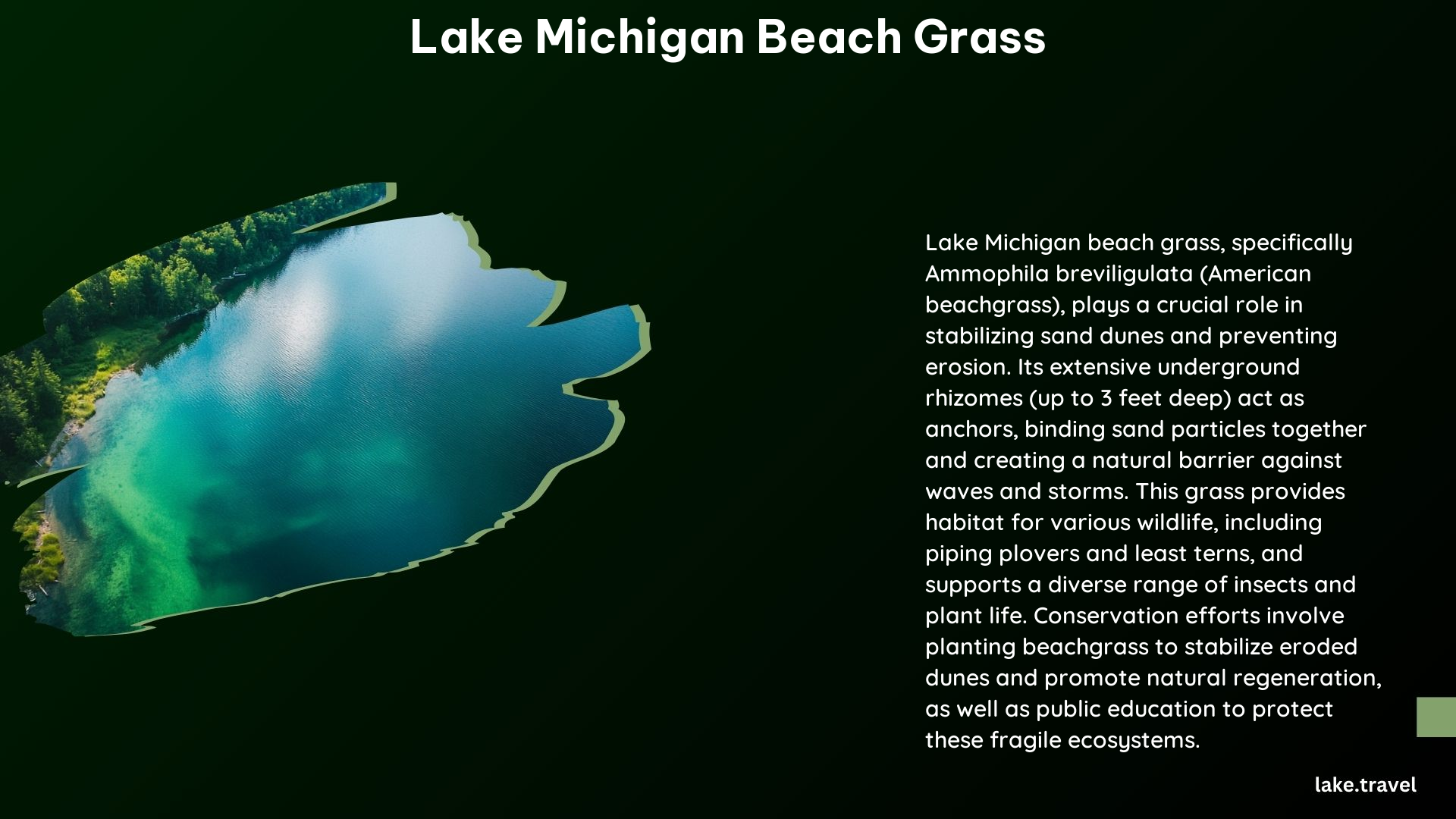Lake Michigan Beach Grass, also known as American Beachgrass or Marram Grass, is a crucial component of the ecology of the Great Lakes shorelines. This native grass species thrives in the harsh environment of sand dunes, playing a vital role in stabilizing the coastline and protecting it from erosion.
What is Lake Michigan Beach Grass?

Lake Michigan Beach Grass, scientifically known as Ammophila breviligulata, is a spreading, rhizomatous native bunch grass that grows in clumps, reaching heights of two to three feet. It is a hardy plant that can withstand the harsh conditions of the Great Lakes shoreline, including strong winds, shifting sands, and limited nutrient availability.
Benefits of Planting Beach Grass

Planting beach grass is an effective and affordable way to prevent erosion on beaches and dunes. The extensive network of underground rhizomes acts like an anchor, binding sand particles together and preventing erosion. This helps to stabilize sand dunes, which in turn protect the coast from the erosive forces of waves and storms.
By stabilizing the sand dunes, beach grass also helps to maintain the natural habitat for a variety of coastal plant and animal species. It provides shelter and nesting sites for birds, and its roots help to support the growth of other dune-dwelling plants.
Best Times to Plant Beach Grass
The best times to plant beach grass are during the spring and fall seasons. In West Michigan, the fall planting season begins around October 15 and goes until the soil freezes, while the spring planting season runs from March to around May 15.
Planting during these seasons allows the grass to establish a strong root system before the harsh winter or hot summer conditions. This helps to ensure the long-term success of the planting and the continued protection of the coastline.
Spacing and Installation Recommendations
When planting beach grass, it’s important to follow best practices for spacing and installation. For planting, one to four culms (individual grass plants) should be planted per hole, depending on the desired density and erosion protection. The spacing can vary from 18 inches for flat areas with little threat of erosion to 6 inches for high-erosion areas with steep slopes and potential 70 mph winds.
The culms should be planted about 8 inches deep using a planting bar or narrow digging trowel. This depth helps to ensure that the roots have access to the moisture and nutrients they need to thrive.
Care and Maintenance
Once established, beach grass requires minimal care and maintenance. It thrives in sandy, sunny conditions and can survive with minimal watering and no fertilization. The grass is adapted to the harsh coastal environment and can withstand drought, high winds, and even occasional flooding.
However, it’s important to protect the dunes from human activity, such as walking or driving on them. This can damage the delicate root system and compromise the grass’s ability to stabilize the sand.
Conservation Efforts
Conservation efforts are underway to protect and restore beachgrass habitats, which are threatened by human activity and invasive species. Public education about the importance of staying off the dunes and respecting fragile coastal ecosystems is crucial.
Organizations like the Oceana Conservation Group and Superior Groundcover work to promote the planting and preservation of beach grass along the Great Lakes shorelines. They offer professional services, educational resources, and community outreach to help protect this vital coastal resource.
Professional Services
Companies like Superior Groundcover offer professional beach grass planting services, including cleaning and preparing the area, adding sand as necessary, and planting grass root plugs. They use high-quality, locally sourced beach grass to ensure the best possible outcomes for their clients.
In addition to beach grass planting, these companies may also offer other erosion control services, such as debris removal and the installation of erosion control blankets. These additional services can help to further stabilize the coastline and promote the growth of beach grass and other native vegetation.
Conclusion
Lake Michigan Beach Grass is a vital component of the Great Lakes coastal ecosystem, playing a crucial role in stabilizing sand dunes and protecting the shoreline from erosion. By understanding the benefits of this native grass and following best practices for planting and maintenance, we can help to preserve and restore these fragile coastal habitats for generations to come.
References
- https://naturalcommunities.net/blogs/news/american-beachgrass-guardian-of-the-great-lakes
- https://www.oceanaconservation.org/dune-grass-sales
- https://www.superiorgroundcover.com/michigan-beach-grass-planting/
- https://www.shorelinemedia.net/oceanas_herald_journal/news/let-s-talk-dune-grass/article_57a39c68-de4f-57a2-80d0-6756e7231aa6.html
- https://lakeshorecustoms.com/guide-to-michigan-beach-grass/
